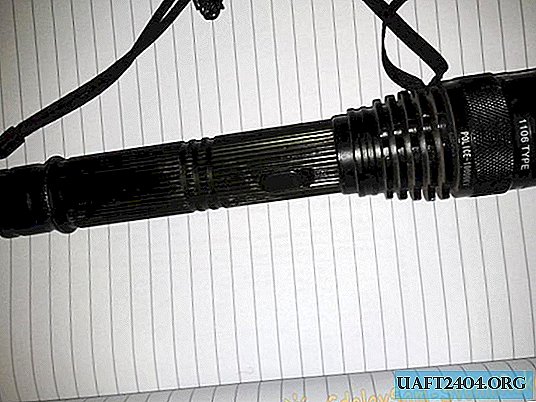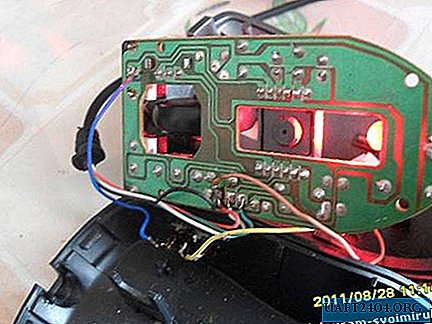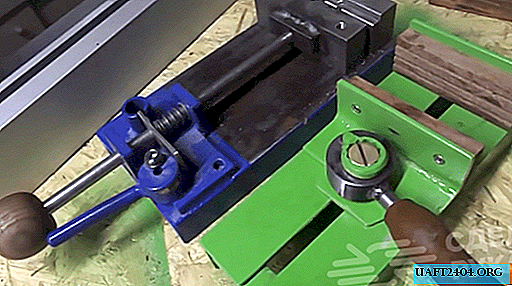Share
Pin
Tweet
Send
Share
Send

By emitting a fairly loud crack and a visible discharge of electricity, it effectively makes even dogs of impressive size go down the drain.

Although the device looks pretty high-quality, over time, it stops working due to drops or a quick discharge of the battery. In such cases, I want to do something to restore the lamp to its former life.
And sometimes this can be done, the question remains, how to disassemble this device to get to its insides? From the outside it seems rather difficult, since the case looks cast and impregnable.

This article will describe how to disassemble one of these lights and possibly find the cause of the breakdown.
Since the structural lights are almost the same, the disassembly method is also suitable for other models in this series.
Begin by removing the protective tape for the mounting screws. The photo shows how to do this.


It happens that this film itself falls off over time.
So, using a suitable screwdriver, we unscrew all the fixing screws, both in front and in the back. Usually there are only four of them.


Next, pull the back, before removing it.

There you will see wires going into the device, charger elements and a piece of polystyrene for greater density.
Everything has a surface mount and is rather flimsy. Therefore, be extremely careful not to tear anything and make it worse.
Here is a diode bridge that extinguishes the capacitor and soldered joints, and not insulated.

Now remove the front part. Just pull it to the side, as with the back, and it comes out easily.

Two wires are drawn from it - these are high-voltage conductors, through which electric current flows to the front arresters.

Strange, but they are not even soldered, but simply inserted into the holes opposite the electrodes. Apparently even without direct contact, the voltage breaks through the necessary distance for the formation of an arc.
The rest of the front is essentially a regular reflector. When it sits in place, the LED hits exactly the center, appearing as if inside the reflector.
We turn again to the back. We extend the bridge with the capacitor as much as possible and get the high-voltage coil embedded in the compound from the inside.


When you pull on this coil, two high-voltage wires go inside the lamp from the back. They need to be aligned, then this procedure will be easier.
As can be seen in the photo, these conductors are simply inserted into the internal openings of the housing from the coil to the front electrodes.

This is how the extracted high-voltage coil looks like.

When assembling the wire back, a thin copper wire tied to them will help. It will be necessary to tighten the two ends at the same time.
With the back of the deal, go back to the front.
We pull out the panel with the LED and after it we find the battery pack assembled in one design.

They look like micro finger-type, but have a slightly shorter length.

There are only five of them and they are connected by metal plates, as if welded to their conclusions.

All this block is placed in a polyethylene casing.
There are some inscriptions on it. Namely, the voltage, which is six volts and the date of manufacture. It turns out that each element has 1.2 volts, like a regular finger battery.

From this we can conclude that if you want to replace the battery, you can pick up something. The main thing is to put it inside the lamp housing.
From the battery to the LED, the voltage goes through a resistance having a rating of about 15 ohms.

This photo shows the inner space where the battery should fit.

There is not much space, but you can pick up something.
Assemble the flashlight in the reverse order. Given the extremely unreliable assembly, everything needs to be done carefully so as not to tear off the wires and avoid short circuits between them and the case.
Share
Pin
Tweet
Send
Share
Send











